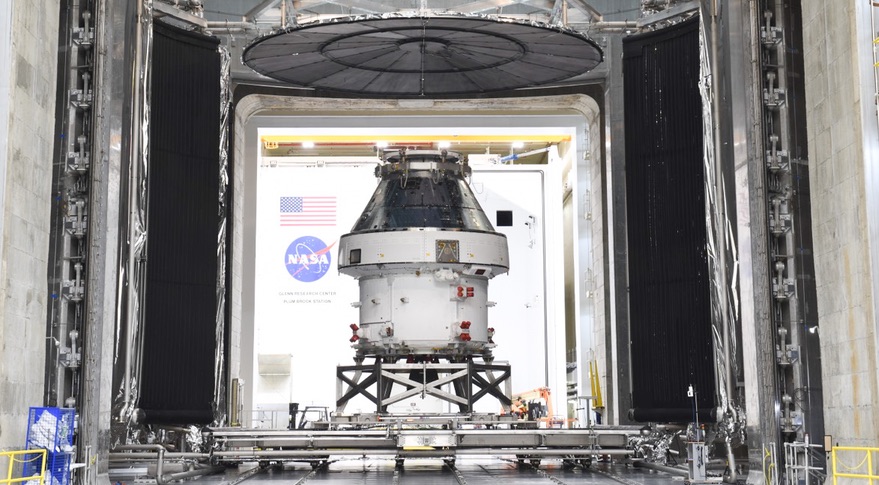Products You May Like
WASHINGTON — The Orion spacecraft that will fly on the first launch of the Space Launch System has completed testing at an Ohio facility and will soon be shipped back to the Kennedy Space Center for final launch preparations.
NASA held a ceremony March 14 at Plum Brook Station in Sandusky, Ohio, run by the Glenn Research Center, to mark the completion of environmental testing of the Orion spacecraft that will fly the Artemis 1 mission. Orion arrived at Plum Brook in November for thermal vacuum and electromagnetic environment testing.
Those tests were “extremely successful,” said Jules Schneider, director of assembly, test and launch operations for Orion at Lockheed Martin, in an interview. The thermal vacuum tests, where the spacecraft was subjected to temperatures ranging from about –155 to 150 degrees Celsius, were completed in 47 days instead of the planned 63 days.
The other set of tests involved electromagnetic interference and compatibility of spacecraft systems. Those took slightly longer than expected, being completed in 13 days versus the planned eight.
Those tests, he said, revealed no major issues with the spacecraft. “We learned some things, but nothing jumped out at us. We didn’t discover anything that was going to pose major problems for us to operate the spacecraft, things that would force us to go back in and either change the design or the location of anything,” he said.
With the testing at Plum Brook complete, NASA will transport the Orion back to the Kennedy Space Center in about a week on a Super Guppy aircraft. It will return to the Neil Armstrong Operations and Checkout Building there for final processing for its launch.
That work, Schneider said, includes removing instrumentation used for the testing at Plum Brook and installing hardware such as the fairing around the Orion service module. That work should take between two and four months. “We’re doing this for the first time so there is a little bit of uncertainty,” he said.
Lockheed is preparing to continue that work despite the growing impacts on the coronavirus pandemic. While access to the Kennedy Space Center is not currently restricted, Schneider said center officials have agreed to consider Orion work as “essential,” meaning that staff can continue to go on site even if the center institutes mandatory telework.
The formal handover to the spacecraft to exploration ground systems contractor Jacobs is currently scheduled for June, and will mark the end of Lockheed’s work on the spacecraft under its contract. Jacobs will then be responsible for launch preparations, such as fueling the spacecraft and later integrating the spacecraft with the SLS.
NASA has not yet announced a new launch date for the Artemis 1 mission, which had previously been scheduled for late this year. NASA Associate Administrator Steve Jurczyk said in late February that the launch would likely take place in mid or late 2021.
The Plum Brook testing is a one-time only event for Orion, which required significant work. “The trip to Plum Brook and back is in and of itself a massive effort,” he said, requiring things like the development of special fixtures to transport Orion, which is normally kept in the vertical position, horizontally. “I can’t overstate how difficult and involved it is just to get the vehicle moved like that.”
Later Orion spacecraft will undergo thermal and vacuum tests in separate chambers at KSC: thermal testing at ambient pressures and vacuum testing at ambient temperatures. In that case, the crew module and service module will perform thermal testing separately, but will be integrated for vacuum tests.
“We’ve been building Artemis 1 for a long time now,” Schneider said. “I’m very much excited about delivering Artemis 1 to NASA this year. It’s been a long journey.”
